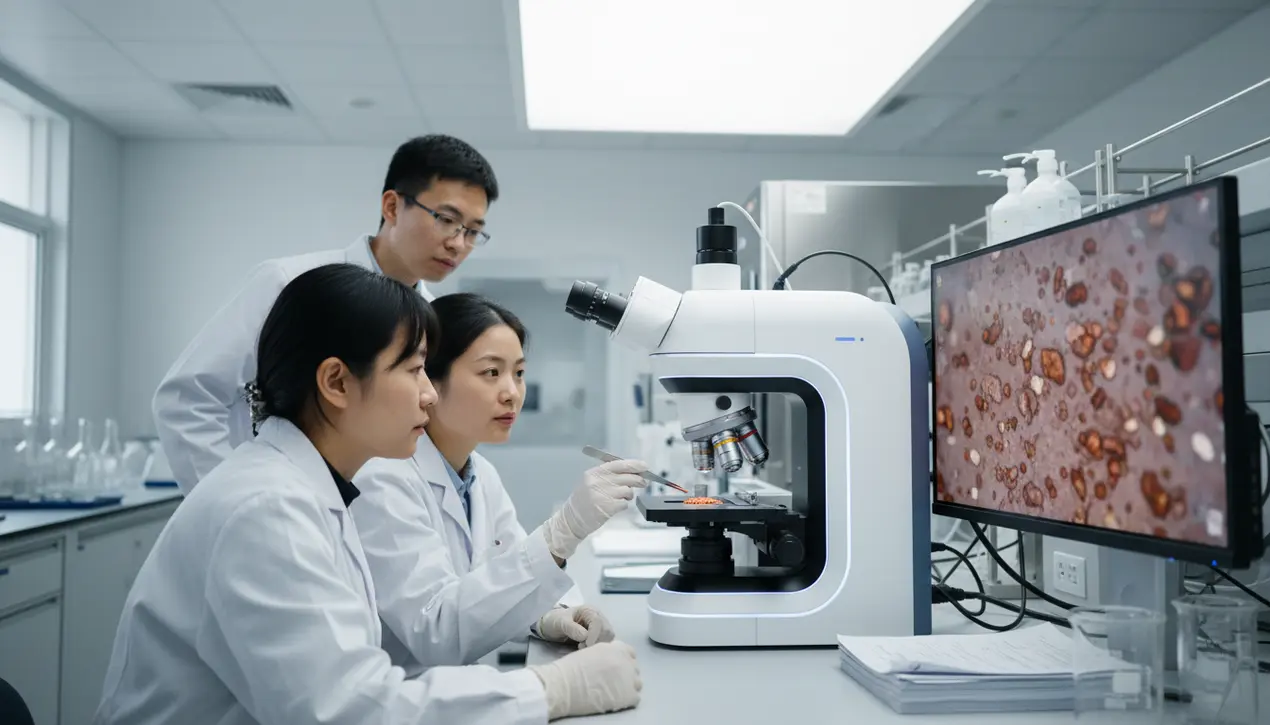
Sciencespace & astronomyMoon and Mars Exploration
Chinese Scientists Discover Iron Rust in Lunar Soil.
TH
Thomas Green
2 hours ago7 min read2 comments
Chinese scientists have pulled back the curtain on a discovery that fundamentally rewrites our lunar playbook, identifying micron-sized grains of iron rust within the pristine samples hauled back by the Chang’e-6 mission. This isn't just a trivial mineralogical footnote; it’s a paradigm-shifting revelation that directly challenges the long-held doctrine of the moon as a bone-dry, oxidation-free world.The very presence of rust, scientifically known as hematite and magnetite, in the lunar regolith throws a cosmic wrench into our understanding of the Moon's surface chemistry, while simultaneously offering a tantalizingly elegant solution to the enduring mystery of its localized magnetic anomalies. Published with considerable fanfare in the peer-reviewed journal Science Advances, the research spearheaded by a collaborative team from Shandong University and the Institute of Geochemistry of the Chinese Academy of Sciences, posits a fascinating geochemical dance.The leading hypothesis suggests that solar wind, that constant stream of charged particles from our Sun, delivers hydrogen to the lunar surface, which typically acts as a reducing agent, preventing oxidation. However, during a specific and critical window in the Moon's orbit—when it passes through the Earth's magnetotail—our planet's magnetic field acts as a temporary shield, blocking over 99% of that solar wind.This brief respite, which lasts for several days each lunar month, allows oxygen from the Earth's upper atmosphere to be transported via the solar wind to the Moon, where it can then interact with iron-rich surfaces and any trace water molecules, catalyzing the rusting process. This discovery does more than just add a new mineral to the lunar catalog; it re-frames the Moon not as a static, isolated museum piece, but as a dynamically interacting component of the Earth-Moon system.The implications ripple outward, touching upon everything from planetary science to future exploration. For decades, the faint, patchy magnetic fields detected by orbiters have puzzled scientists, as the Moon lacks a global magnetic dynamo.The presence of these ferromagnetic iron oxides could very well be the 'smoking gun' explaining these anomalies, as concentrations of magnetite could create localized magnetic fields strong enough to deflect solar particles. This has profound implications for understanding the space weathering process and the preservation of volatile resources in permanently shadowed craters.Furthermore, from a practical standpoint for future Artemis-era astronauts, this process hints at an in-situ resource utilization (ISRU) pathway. If rust can form through interaction with Earth-borne oxygen, it opens up speculative but thrilling possibilities for material processing on the lunar surface, potentially using local materials to generate oxygen for life support or metallurgical purposes.This finding by the Chang’e-6 team is a testament to the value of sample-return missions, where state-of-the-art lab analysis on Earth can uncover secrets no rover or orbiter could ever discern. It echoes the legacy of the Apollo program, where decades-later analysis of returned samples continues to yield new discoveries, reminding us that the most profound answers are often hidden in the smallest of details, waiting for the curious and meticulous to find them. It forces us to look at our celestial neighbor with fresh eyes, seeing it not as a dead rock, but as a world still chemically active and intimately connected to our own.
#editorial picks news
#lunar soil
#iron rust
#Chang'e-6
#magnetic anomalies
#Chinese scientists
#space chemistry
Stay Informed. Act Smarter.
Get weekly highlights, major headlines, and expert insights — then put your knowledge to work in our live prediction markets.
Related News
Comments
Loading comments...
© 2025 Outpoll Service LTD. All rights reserved.